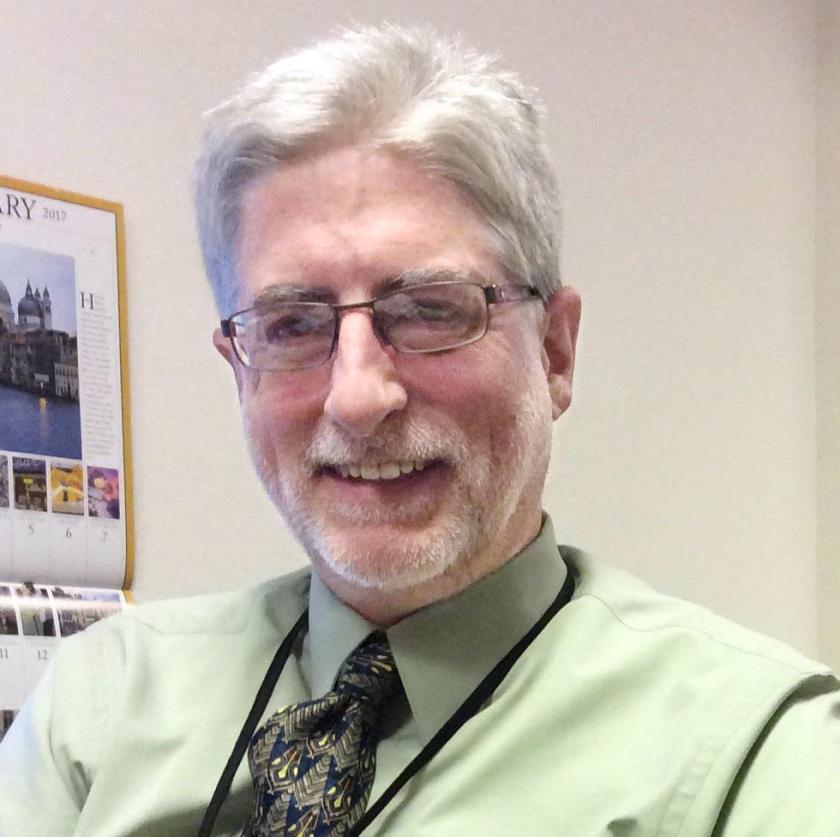
Doug Litts always knew he wanted to be an art historian. Though born in New Jersey, his family moved to Florida when he was nine, so when it was time for college, the University of Florida (in Gainesville) was the logical place to study it. But what can you do with a BA in art history?
So he went to get a master's degree in the Big Apple, NYU in particular. But what can you do with an MA in art history? Especially back in 1992, which was not a time when universities were staffing up? The answer: you wait on tables.
A few years of that led him to consider library science. Perhaps it would be easier to find a job as an art history librarian than teaching art history. He landed at the University of Illinois at Urbana-Champaign, which he greatly enjoyed. He also discovered he liked the Midwest, and Chicago especially. He graduated in August 1997, so he waited tables in Chicago and did cataloging at Abbott Labs until he found his first art library job the following April at the Virginia Museum of Fine Arts in Richmond. "It was a great first job," he says. "My title was assistant librarian/online catalog system administrator, and I was the direct assistant to the head librarian. I supervised a full- and part-time assistant and 20 volunteers!" Perhaps it also did not hurt, given the year, that the word "online" was in his title.
In 2004 he moved to Washington, DC, which was to be his home through 2015. There he was employed first at the Corcoran, as library director for both the gallery and college. (Mind you, this was when the Corcoran was in its heyday, not the poor stepchild it became after its school was merged into George Washington University and its artworks given to the National Gallery.) At the Corcoran he was the library director, in charge of everything from collection development to supervising student workers.
In 2008, the Smithsonian called, and he answered. He became the senior reference librarian for the American Art Museum and National Portrait Gallery. By 2010 his capabilities were recognized and he was named head librarian, again for both. "It was an excellent job," he says, "but the odd structure of the Smithsonian led to some challenges. The Smithsonian Libraries is separate from but serves all the Smithsonian museums. It is literally a tenant in each of them where it has a facility. If the Hirshhorn, say, wanted to start using what has been library space for something else, the library had to adapt."
As a result, when he heard that the executive director of libraries and archives position at the Art Institute of Chicago was soon to be available, he applied. "And I got it! I'm thrilled to be back in the town where I waited tables looking for my first job as a librarian." He considers it about the best job there is in the field: the Met and the Getty have their advantages, but he'd much rather be in Chicago than on either of the coasts.
I asked him how many jobs there are in his field. "Nobody really knows. ARLIS/NA membership is over a thousand." (ARLIS/NA is the art libraries society, and it comes up on the first page of a Google search for Litts. He does his professional duty as an editor on its Reviews.) "Many more are in the art library field but chose not to professionally engage in ARLIS/NA, so it's hard to get a defined number."
We got to talking about changes in the library world, about the many situations where electronic books are replacing paper books. It's moving more slowly in the art area, he says. "Electronic databases are wonderful for research for the way they can replace laborious looking at dozens of volumes with a few minutes of typing. But for electronic books, especially with contemporary art, it is a challenge. If we are having a show of a living or recent artist, it is easier to negotiate to print a paper book showing the artist's work. But the artist or his agent often don't consider electronic versions, because of the risk of the art work being appropriated without credit or payment."
(That being said, where it can the Art Institute provides excellent online materials. I stumbled just now on its collection of papers written by Daniel Burnham as he was trying to spark people's interest for his Plan of Chicago. And when I was researching Wilbert Hasbrouck for his "Caxtonians Collect," online Art Institute interviews with him extended my own interview.)
A large part of the work in the library is providing support for other Institute staff who are preparing an exhibit. "When a show opens, it's gratifying to tour it and see how items found in the library collection have pointed the curators in useful new directions. I've only been here a year and a half, so I'm just now getting a chance to see what the library’s contribution can be. It takes a long time to organize a big historic show."
I was surprised to hear that he and his partner chose to live in Flossmoor when they moved here. "It's actually very convenient, especially since the Metra station is right here by the Art Institute. It takes me less than an hour from my house to my office," he says. And the benefit of living in Flossmoor is that they found a house on a lot that is almost an acre in size, including some woods at the back.